In June, Apple revealed the Mac Pro and announced iPadOS at its annual WWDC, and then admitted that Chief Design Officer Jony Ive was leaving the company.
More than any other month in 2019, it's hard to know where to start with June. We were expecting WWDC to offer up some surprises, and it was certainly one of the most successful WorldWide Developer Conferences that Apple has done. We just never saw that Jony Ive would choose now to exit stage left, pursued by a freelance contract to keep advising Apple.
In between the surprises of WWDC and Jony Ive, though, there was one related yet rather sad moment. This month, it was revealed that Cupertino's Flint Center was to close forever.
We all know what happened in that building. It was in the Flint Center that Steve Jobs unveiled the original Mac to shareholders. That was ahead of the grand public unveiling a week later, but he was back at the Flint Center for the public launch of the iMac.
It was at the Flint Center that Tim Cook stood on stage in 2014 to announce the Apple Watch. And to gift us all a U2 album.
The Flint Center is going to be turned into student accommodation now.
WWDC 2019
AppleInsider took you to Apple Park and behind the scenes for the event
The event itself didn't have surprises that came entirely out of left field. Just about everything was hinted at or leaked before, but the volume of detail on the day was impressive. There were revelations that seemed good at the event but are likely to be the ones we ultimately look back on as being huge.
As far as leaks go, easily the very last one to squeeze in before Tim Cook stepped out on stage was the news that we might get an iPadOS. We did.
"It's become a truly distinct experience," Craig Federighi, Apple's senior vice president of software engineering, said afterward. "It's not an iPhone experience. It's not a Mac experience. The name is a recognition of that."
What Apple didn't appear to recognize was just how much people would leap on one single facet of iPadOS. It's only intended, so far, as an accessibility aid, but you can now connect a mouse or trackpad to your iPad.
Sidecar and macOS Catalina
The new macOS Catalina introduced Sidecar, the ability to use your iPad as a second display for your Mac, just as you'd been able to do for years with solutions from third-party developers.
We all had the same thought when Sidecar was revealed. "Sherlocked," we said aloud. After the event, we talked with many developers who'd seen their apps gain a pretty massive new competitor in Apple's macOS features.
Apple zoomed through the unveiling of macOS Catalina, packing in feature after feature that sometimes blurred the lines between its different OSes.
That included the way that macOS now followed iOS in having separate apps for Music, Podcasts, and TV. It was true, iTunes was gone — which sparked a lot of incendiary headlines making people think they were going to lose all the music they'd ever bought.
The truth was in here, though, with AppleInsider explaining what was actually happening and what would actually happen to your music.
While some users were off grumbling about what they thought was happening, Apple revealed update after update. CarPlay had its first-ever significant overhaul, for instance. "Sign in With Apple" got applause as the new equivalent to — but significantly safer and more user-friendly than — signing in with either Google or Facebook.
And then there was the continuing story of Project Catalyst. Introduced in 2018 as a multi-year process, 2019's episode didn't seem that groundbreaking. Apple's Catalyst-based apps — Home, News and so on — were pretty much the same as they were last year, for instance.
Nonetheless, Craig Federighi talked up the project both during WWDC and afterward. He admitted to poor design decisions on Apple's part for how Catalyst was received initially, but now it is a "no brainer" to use it to put iPad apps on the Mac.
Key to this, though, was a seemingly small announcement at WWDC. The whole week-long event is for developers, of course, but Apple does know the world is watching, so it tends to devote the opening keynote to telling that world what it wants them to hear. This is why you get product releases, why Apple talks up its features.
This time, though, Apple devoted a short spot in the keynote to something no user will ever be conscious of, and yet which every developer we spoke to afterward was most excited by.
SwiftUI lets developers create and test apps in the Swift language, taking away as much of the routine burden of development as possible so that they can concentrate on what makes their app unique.
"It just works," said Federighi.
About iOS 13 and watchOS 6
During WWDC, iOS 13 sounded like the best thing since, well, iOS 12.
Apple mentioned how HomePod, really part of iOS at the moment, would even gain more music to listen to — over 100,000 live radio stations would be coming.
Where that would give our ears something to listen to, Apple Maps was set on helping our eyes. Alongside greater detail for maps that would be rolling out across the US this year and selected other countries in 2020, there was also Look Around.
Apple can call this what it likes. We just knew right away that it was Google Street View in all but name. Until we saw it in action, and now we know it is what Google's feature should be. And, in all probability, it will be one day.
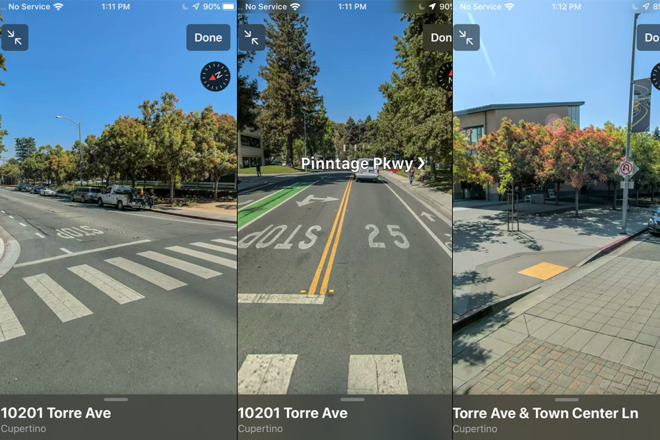 It's only when you see it live in your hands that you really appreciate how good Look Around is in Apple Maps
It's only when you see it live in your hands that you really appreciate how good Look Around is in Apple MapsWe also knew right away, though, that this was a way to demolish your battery life. Except Apple also introduced smart battery optimization in iOS 13 to prevent battery ageing.
There was also a lot new in the watchOS 6 release, too. Alongside smaller features such as new watch faces, an updated calculator, audiobooks, and voice memos, there was also the App Store. As of watchOS 6, you can buy apps directly on the Apple Watch.
Right now, that isn't quite the giant deal that it was when the App Store first came to iOS. But, the easier Apple makes it to sell your apps to Watch users, surely the more apps will come.
There was much more to say about Apple's various OSes — including HomeKit getting the ability to store security camera video.
All through the iOS and iPadOS details, such as the new features for Apple Pencil, though, the emphasis was on how this helps pro users. But if you're talking pro, you're talking about the biggest hardware release Apple had done on stage all year.
Mac Pro is here, or very nearly
Tim Cook and head of hardware John Ternus showed us the new Mac Pro in detail. There was still much we wouldn't know until its actual release, such as any pricing beyond the base cost, but there was a lot to say at WWDC.
The new 2019 Mac Pro would come with up to 28 cores and be able to handle up to 1.5TB of RAM. It was also as modular as Apple had previously hinted, and it was to be launched alongside the promised Pro Display XDR.
You could also see for yourself. Even if you haven't got the budget for the base $5,999 Mac Pro or $4,999 Pro Display XDR — and $999 for the stand — you could see how they would look on your desk. Visit the Apple site on an iOS device and you could use AR to see how they looked at life-size and from any angle.
It might be the closest most of us get to owning a Mac Pro, but Apple isn't exactly aiming this at Mac mini users. Apple was aiming high, and right from the moment of this announcement, there was enough detail about the Mac Pro that AppleInsider was able to report on who would be buying it.
And then there was Jony Ive
At the end of June, we learned of the end of Jony Ive's era at Apple.
His exit date wasn't specified beyond being later in 2019, but Apple was also keen to create a blur around the word "leaving." Ive would reportedly continue work with Apple in some form from his new company, LoveFrom.
"While I will not be an [Apple] employee, I will still be very involved — I hope for many, many years to come," Ive said in an interview. "This just seems like a natural and gentle time to make this change."
"After nearly 30 years and countless projects, I am most proud of the lasting work we have done to create a design team, process and culture at Apple that is without peer. Today it is stronger, more vibrant and more talented than at any point in Apple's history," Ive continued.
"The team will certainly thrive under the excellent leadership of Evans, Alan and Jeff, who have been among my closest collaborators. I have the utmost confidence in my designer colleagues at Apple, who remain my closest friends, and I look forward to working with them for many years to come."
It may have been a "natural and gentle time" to leave, but few outside Apple saw it coming. And the moment Ive's departure was announced, there were two immediate and obvious reactions.
First, there was the inevitable internal email from Tim Cook praising Ive, and then there was the external furor over how this means Apple is doomed.
Not to knock Ive and his astonishing work, but of course Apple isn't finished.
What was perhaps less predictable was that as soon as Ive's departure was revealed, we started to get more details of his work at Apple — including some previously secret snippets.
So we finally learned that yes, Apple had actually made a TV set. Not the Apple TV set-top box, not the Apple TV+ service — which did of course get a mention or three at WWDC — but an actual television set.
We'll never see it on sale. Whatever reasons stopped Apple releasing it before, Ive's new firm is concentrating on health and wearable technology instead.
That would seem to fit with where Apple is heading these days — and it may well be time the company moves away from hardware releases given all the troubles it's had with that this month.
Tariffs and China
June's episode in the up and down story of Apple in China had a good part where we learned that number of users in the country has been increasing. According to Morgan Stanley, China had its fifth consecutive month of year-over-year user growth.
Then Tim Cook told CBS that Apple had not yet been affected by the US/China trade tensions. However, he also made it clear that the disputes and, in particular, tariffs would hit America.
"The truth is, the iPhone is made everywhere. It's made everywhere," he said. "And so — a tariff on the iPhone would hurt all of those countries, but the one that would be hurt the most is this one."
Cook consequently met with President Trump to discuss the issues. He revealed little then of the meeting, but a week later Apple formally requested that the US not impose tariffs on its imported products.
"Apple's products are used by American families, students, businesses, government agencies, schools, and hospitals," Apple's letter to the administration reads, "to communicate, teach, improve health outcomes, enhance creativity and enterprise."
"The Chinese producers we compete with in global markets do not have a significant presence in the US market, and so would not be impacted by US tariffs. Neither would our other major non-US competitors," continued. "A US tariff would, therefore, tilt the playing field in favor of our global competitors."
Keep up with AppleInsider by downloading the AppleInsider app for iOS, and follow us on YouTube, Twitter @appleinsider and Facebook for live, late-breaking coverage. You can also check out our official Instagram account for exclusive photos.
 William Gallagher
William Gallagher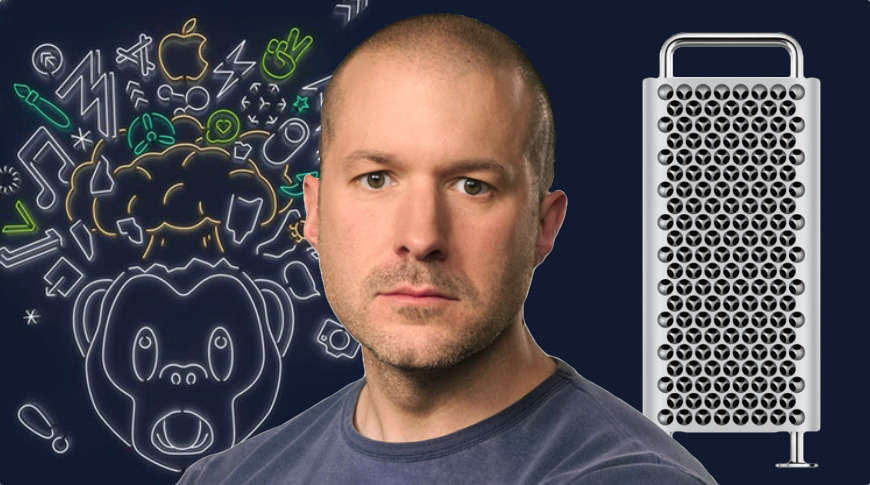
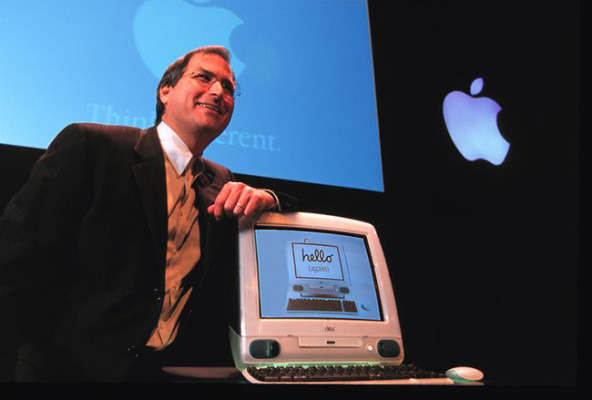
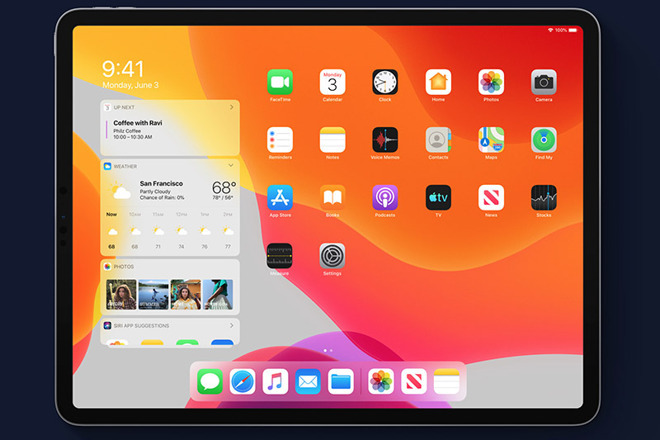
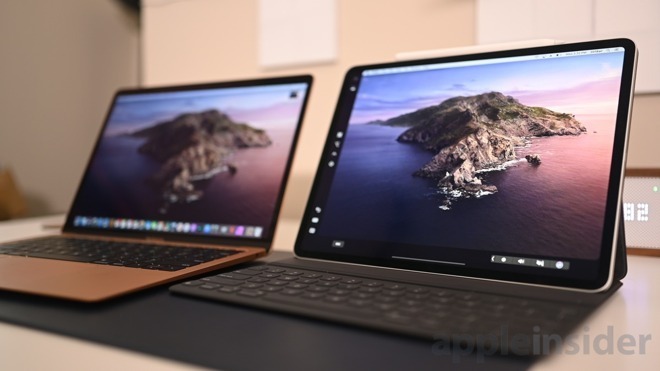
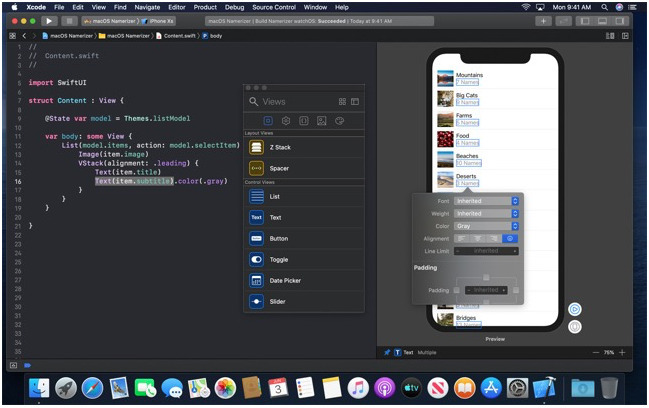
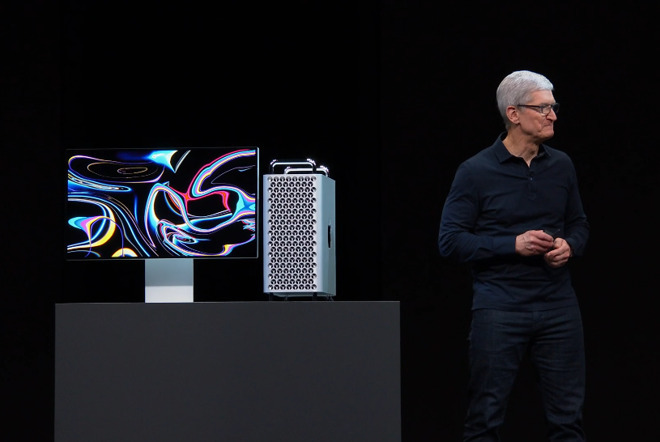




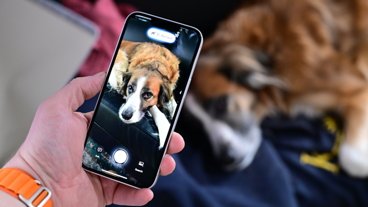
-xl-m.jpg)



-m.jpg)





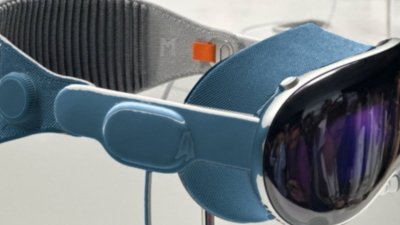
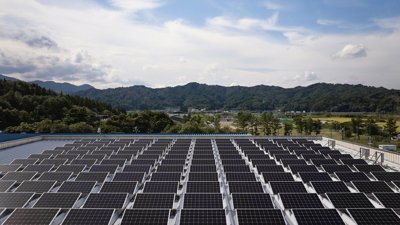
 Amber Neely
Amber Neely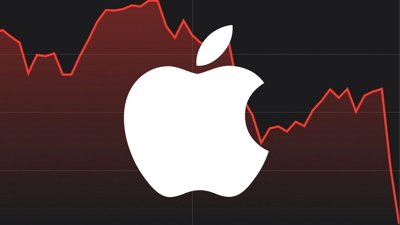
 Malcolm Owen
Malcolm Owen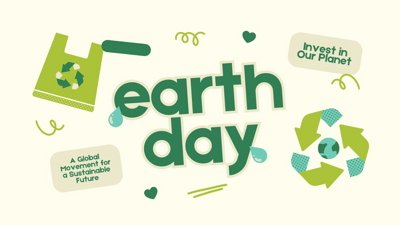
 Andrew Orr
Andrew Orr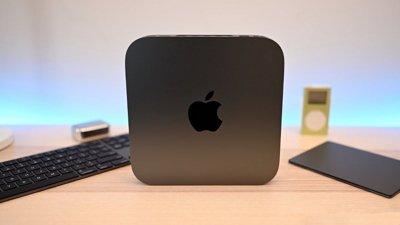
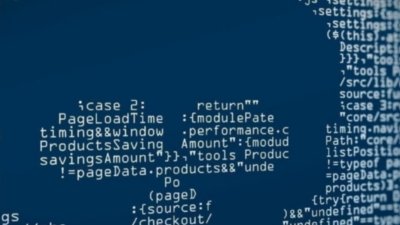
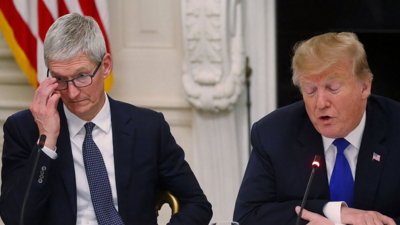
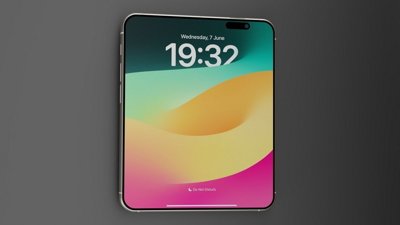

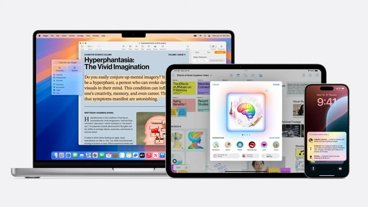
-m.jpg)






5 Comments
Can't wait for those who'll blame everything on Ive. I hear them coming!
The bizarre Mighty Mouse, iPhone charging cases & butterfly keyboard being the exception to the Rule
The one’s who claim Ive’s departure has already changed Apple’s design philosophy are blind and delusional. Do you really think Apple made last minute design changes to anything after Jony left? Every single product in Apple’s lineup has Ive’s mark on it. This will continue for years and I guess those same people forgot about the announcement that stated Apple would continue to be Ive’s primary client. So get a clue and realize Jony Ive’s DNA is firmly ensconced in Apple and nothing will change for years to come. The new Mac Pro was in design for over a year and you think Ive didn’t have any say in it? Same for the new MBP 16”.